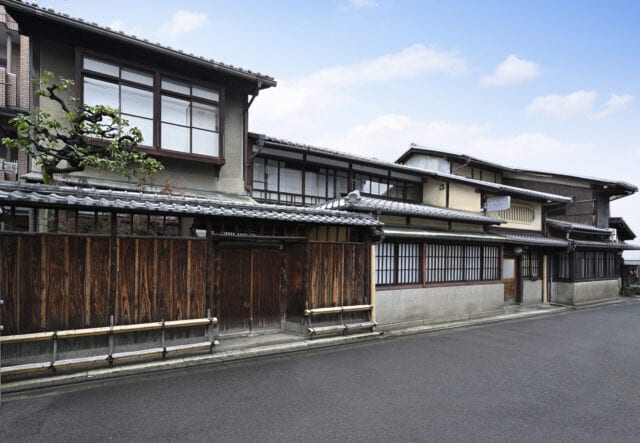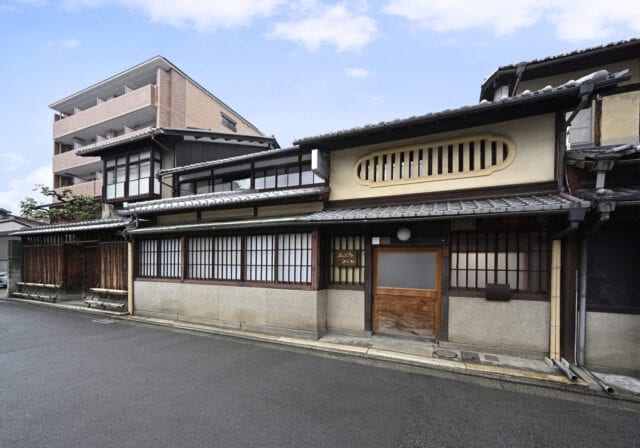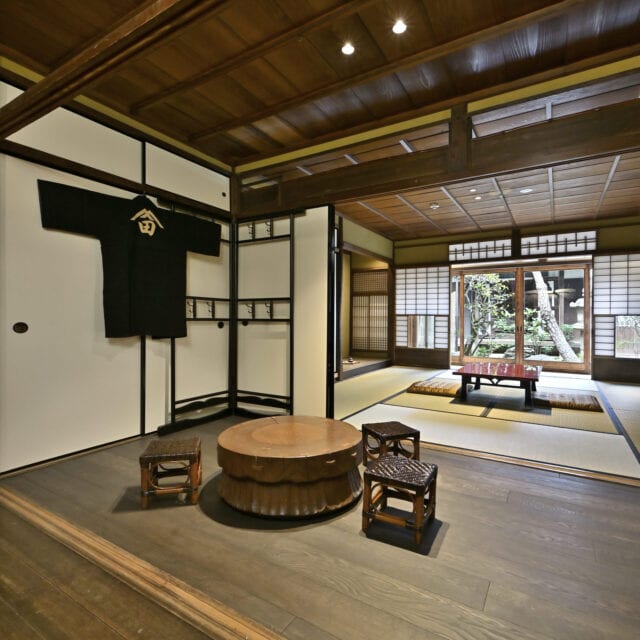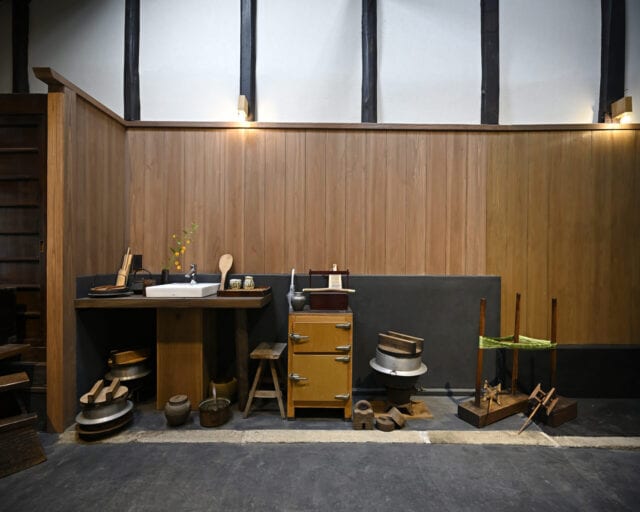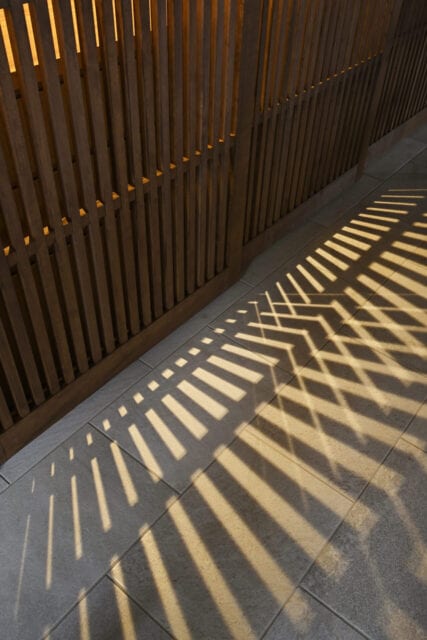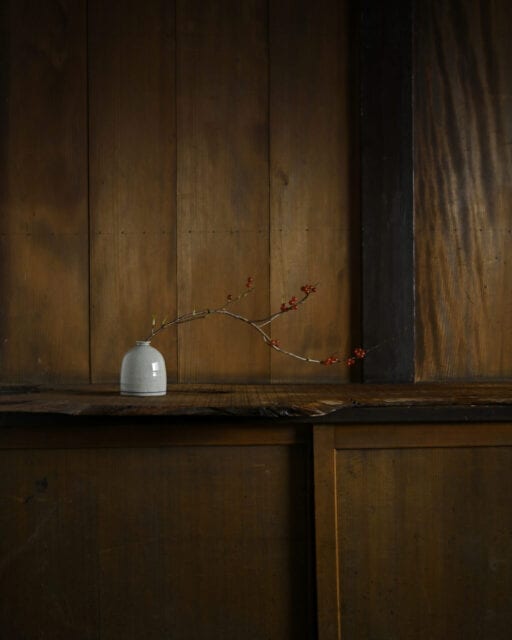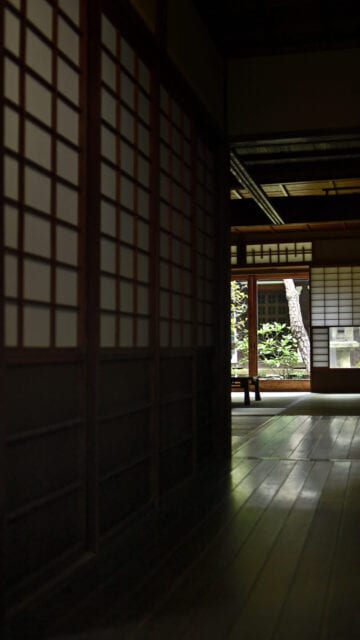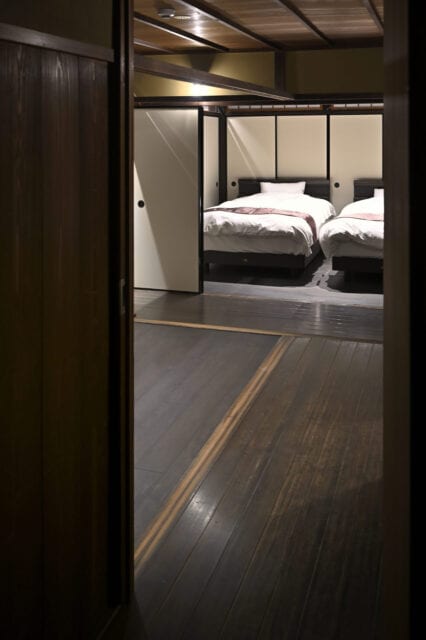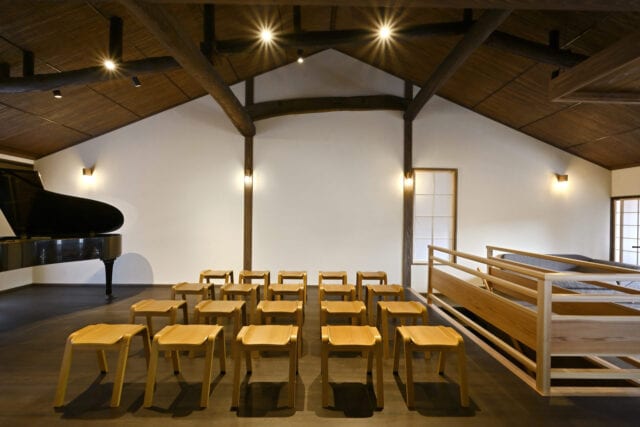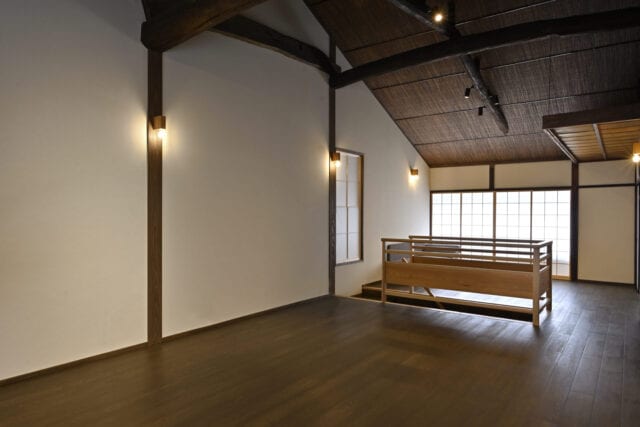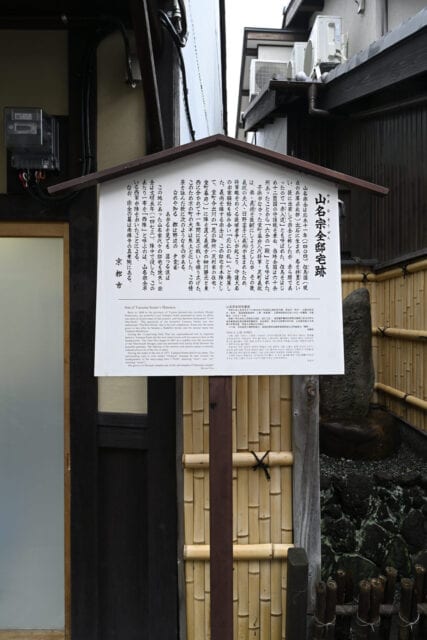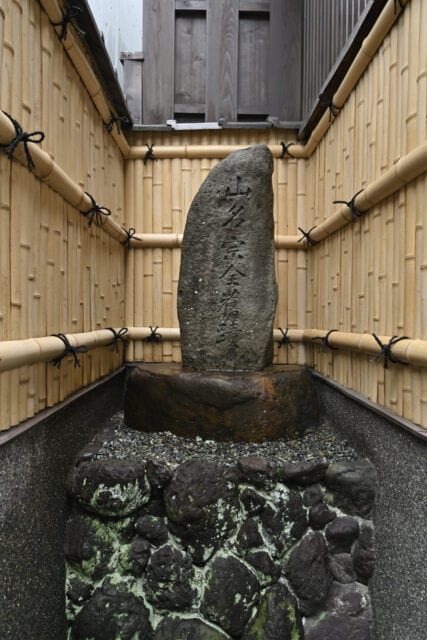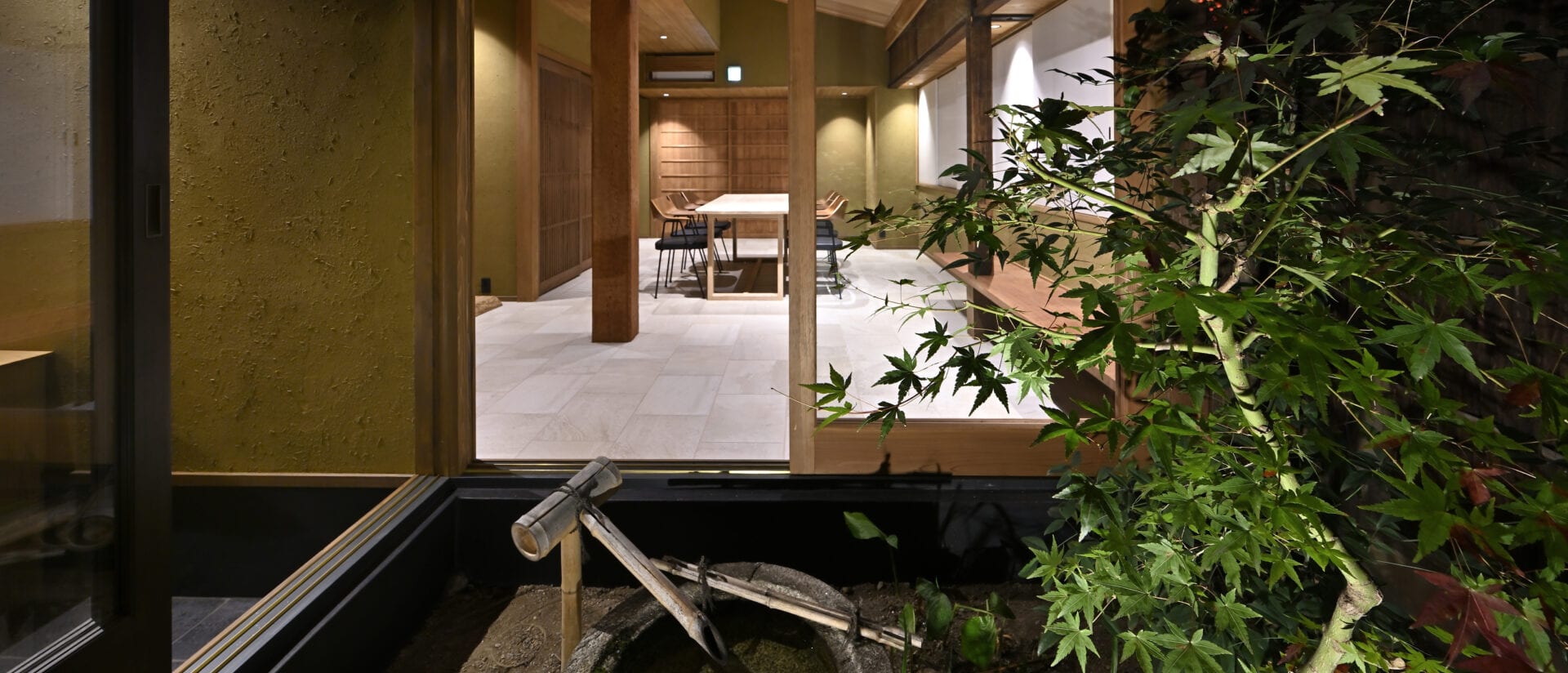
Limited to one group per day
Private reservation of a traditional Kyoto-style townhouse
The Fujita Residence is a traditional townhouse, or machiya, and was built at the site of the residence of the 15th-century warlord, Yamana Sozen. The town is named Yamana-cho after him. The district is commonly known as Nishijin (West Camp), because Yamana Sozen commanded the Western Army during the Onin War (1467-1477).
The eastern part of the house was built in the early Meiji era (1868-1912), and features vestiges from the past, such as the mushikomado (lattice windows for ventilation and lighting built into painted walls) and bare wood lattice windows.
Nishijin Fujita is an inn that forms the first floor of the eastern part of the Fujita Residence. Structure and furnishings in tatami rooms and bedroom are preserved in the traditional machiya style, with the living room, washing room and bathroom renovated for improved convenience. From the room, you can see the garden with a warehouse and tearoom through a handmade glass window, bringing on a feeling of the quiet passage of time.
The corridor leading from the entrance to the rear garden is referred to as toriniwa, and this is where the cooking stove used to be located. The corridor is now used as a display space, and various items such as houseware from the pre-war period and tools for Nishijin-ori textile manufacturing are exhibited. Rare books about Kyoto are also available for free reading.
*Please refer to the Room Information page for details of each room.
Event space on the second floor
(not ordinarily open to the public)
The second floor is not ordinarily open to the public. However, it can be used as an event space upon request (please contact Fujita Art Inc. for more information).
About Nishijin
It is said that textile production was already taking place in Kyoto from around the 5th Century, and that a great number of textile artisans lived in Kuromon Kamichojamachi area (south of present-day Nishijin) in the Heian era (8th century). Their textiles, such as “Otoneri twill weave” and “Omiya silk,” were highly valued in the late Heian era.
In the middle of the Muromachi ear (1336 to 1568), a civil war between the west and east of Kyoto broke out, the Onin War (1467 to 1477). The name of the district, “Nishijin” (West Camp), is derived from an episode where the military general Yamana Sozen and other warlords made a stand on the west side of the Horikawa river during the war. The war caused many in the locality to flee, including the local textile artisans. After the war, the artisans returned to Kyoto and started textile production once more, and reorganized the trade association “Otoneri-za.” Since then, Nishijin-ori textiles have become globally renowned as products which best show the kimono culture of Kyoto and represent a genuine traditional industry of Japanese origin.
The Fujita family lived in the center of the Nishijin district. The family was a leading textile manufacturer in Nishijin during the Taisho era (1912-1926) and the early Showa era (1926-1989), possessing a great number of weaving looms. The store (on the part of present-day building) was too small for the increased number of weaving looms, thus the family bought the house adjacent to it. They had the new house remodeled according to the liking of Kitagawa Heihachi (the father of Kitagawa Heiro, a dye/weaving artisan and living national treasure), who was father-in-law of the then head of the family, and then sumptuously appointed the rooms. Examples include door handles specially designed after the shape of a loom shuttle using the highest quality wood, and furnishings custom-made for each room.
The eastern part of the house is preserved in the traditional machiya (townhouse) style, while the western part was designed with the owner paying great attention to every detail. Every room and space in the Fujita Residence presents craftsmanship, trust between the people involved in the construction, as well as the lifestyles of the people who lived there. The house tells us the history of Nishijin-ori textiles as passed down in the Nishijin district, part of the foundation of the culture of Kyoto today.
The main part of the house was rebuilt in 2019, and renovated into an inn which is available exclusively for a single group of visitors per day. You will surely enjoy the traditions of Nishijin while immersed in the authentic surroundings of a historic Kyo-machiya townhouse at the Kyoto Nishijin Fujita.
*Please refer to the Room Information page for details of each room.
